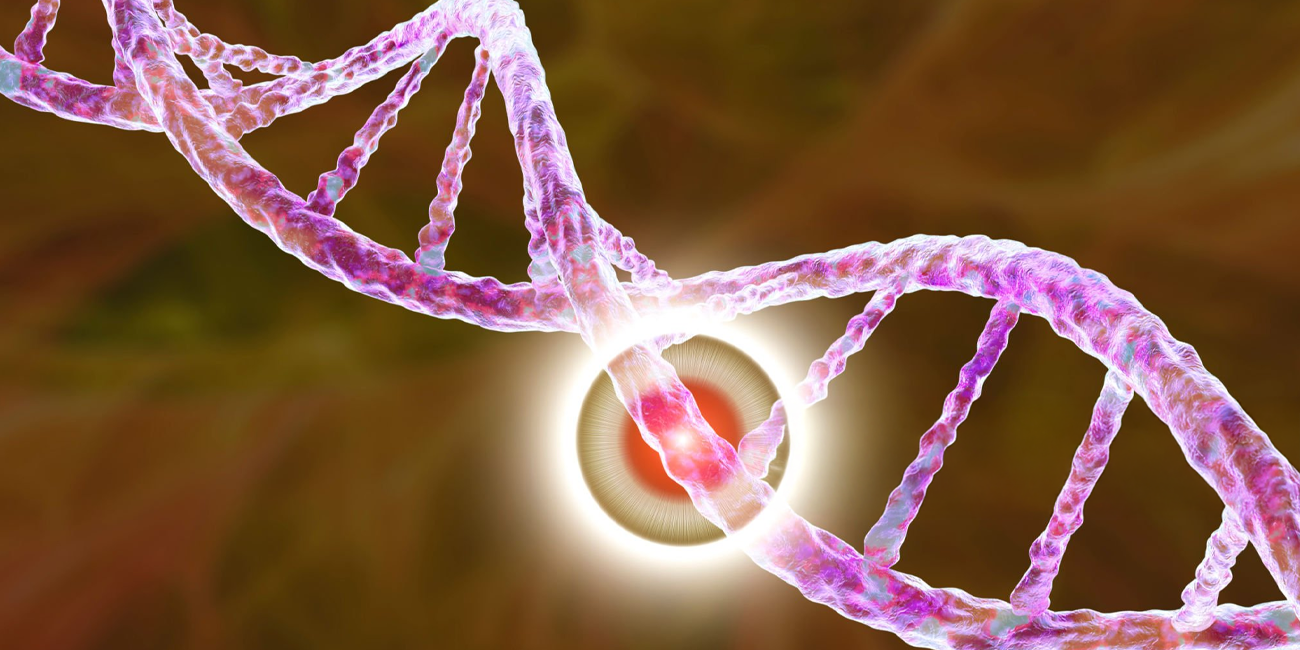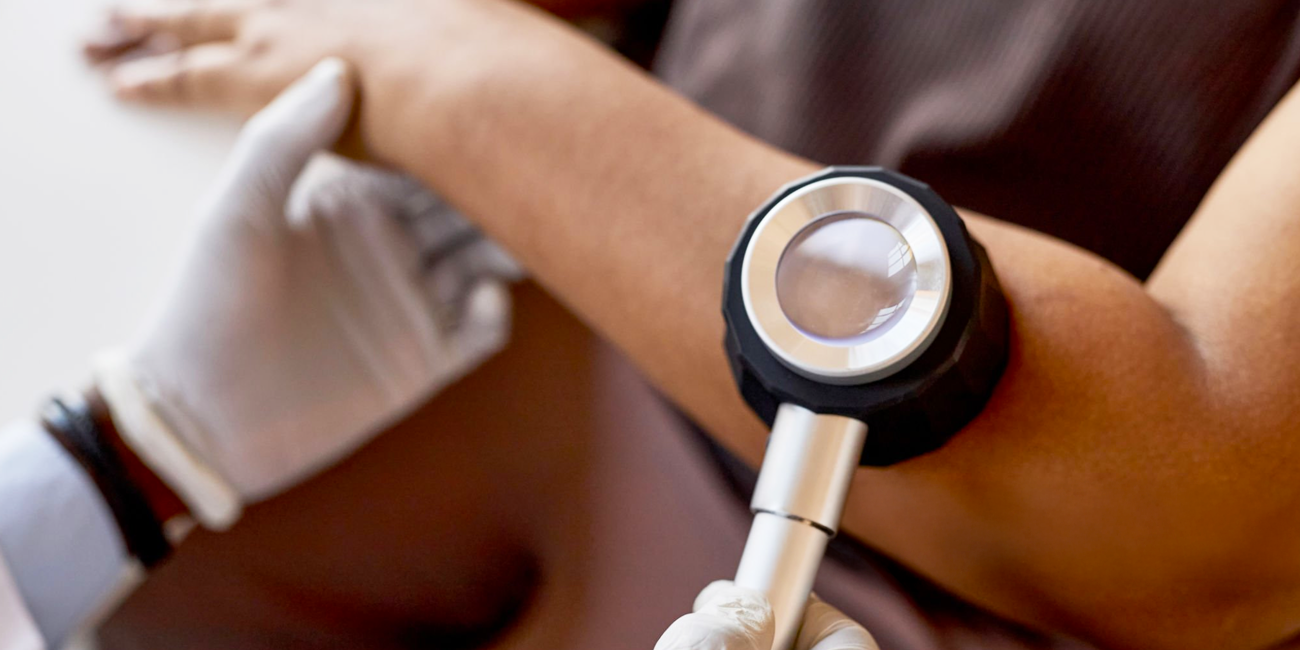
Book a Consultation
Thank you!
Your form has been sent successfully.



May 29, 2023
Eyelid cancer is a rare form of skin cancer that develops on or around the eyelid. Although it is rare, it can be dangerous due to the delicate nature of the area and its potential to spread to nearby tissues and organs.
In this blog post, we will share eyelid cancer symptoms, causes, and treatment options. Read on to learn more.
It is the most common type of eyelid cancer that accounts for approximately 90% of all eyelid cancer cases. BCC usually develops on the lower eyelid and is more common in individuals with fair skin who have had prolonged sun exposure. TIt is slow-growing and typically appears as a small, raised bump with a pearly or waxy appearance.
The second most common type of eyelid cancer accounts for approximately 5% of all cases. It also typically develops on the lower eyelid and commonly appears as a scaly or crusty growth that may bleed or become inflamed.
This type is less common but potentially more serious and can spread rapidly. The pigment-producing cells are responsible for the development of melanomas in eyelids. Melanoma in the eyelid is the most difficult to treat because it can spread quickly to other parts of the body. It may appear as a dark, irregularly shaped growth or a spot on the eyelid, often changing its size, shape, or color over time.
This rare but aggressive type of eyelid cancer arises from the oil glands of the eyelid. SCG typically appears as a painless nodule on the upper or lower eyelid and is often mistaken for a benign eyelid lesion. It is more common in individuals with a history of chronic inflammation of the eyelid, such as blepharitis.

Prolonged exposure to UV radiation can damage the DNA in skin cells, leading to abnormal growth and the development of cancer.
Those with fair skin have less pigment in their eyelids to protect against UV radiation, making them more susceptible to sun damage.
The risk of eyelid cancer is higher for those over 50.
Individuals with a family history of any type of skin cancer may be at a higher risk of developing the disease.
People with skin lesions like actinic keratoses and Bowen's disease are more likely to develop squamous cell carcinoma.
People with weakened immune systems, such as those with HIV/AIDS or who have received an organ transplant, are at an increased risk.
Having one or more of these risk factors does not necessarily mean that individuals will develop eyelid cancer. It is necessary to consult a primary care physician in case of any concerns.
The following are some common symptoms that may indicate the presence of eyelid cancer:
However, it is crucial to remember that all bumps or lumps on the eyelid are not cancerous. If individuals notice any persistent issue in their eyelids, consult an ophthalmologist or dermatologist for a thorough examination and diagnosis.

While diagnosing eyelid cancer, a physical examination is the first step where a primary care physician looks for any abnormalities, such as lumps or discoloration. They may also check the surrounding lymph nodes for signs of abnormalities. If they find any suspicious lump, a biopsy may be performed to confirm the diagnosis.
Oncologists may also recommend imaging tests such as CT scans or MRIs to check if the disease has spread beyond the eyelid to other parts of the body. These tests can help determine the extent of cancer and guide treatment decisions.
The following are some common treatment options for eyelid cancer:
In this technique, surgeons remove the bump and small fragments of the edge of where cancer existed. Each section is examined under a microscope until all cancerous tissues are removed.
Doctors usually recommend the Mohs procedure to treat large tumors and recurrent cancers, but it is now becoming a preferred treatment for eyelid cancer as well. After this surgery, individuals may need to undergo reconstructive surgery to restore the eyelid’s appearance and functions.
Oncologists may recommend radiotherapy after surgery to kill any remaining cancer cells and reduce the risk of recurrence. Radiation therapy may also be used as the primary treatment for larger or more advanced cases that cannot be treated with surgery alone.
Radiotherapy is typically given over a period of several weeks and may cause side effects such as skin irritation, fatigue, and vision changes.
Chemotherapy is a cancer treatment procedure that is typically reserved for advanced or recurrent cases that may require a combination of different treatment options.
This technique involves freezing the cancerous tissues with liquid nitrogen in order to destroy them effectively. Cryotherapy is typically used in treating small or superficial cancers that have not spread to other organs of the body.
Although this procedure is still not commonly used, it is relatively quick and simple and can be done on an outpatient basis. However, it also comes with certain side effects that may include pain, swelling, and scarring.
In this procedure, oncologists use intense beams of light to destroy cancerous cells. Laser therapy is typically used for very small or early-stage cancers where the disease has not yet metastasized. It is a quick and painless procedure that can also be done on an outpatient basis.
The specific treatment approach for eyelid cancer depends on several factors, and therefore, it is crucial to visit a cancer treatment center and work closely with a team of ophthalmologists, dermatologists, and oncologists to receive an individualized treatment plan.
Among the four types of eyelid cancer, basal cell, and squamous cell skin cancers are almost always curable, especially if it is diagnosed and treated early. Melanoma is also curable if diagnosed and treated in its earliest stages. However, melanoma has a higher recurrence rate, and it is more likely to spread to other parts of the body more quickly.
While there may not be any definite way to prevent eyelid cancer, individuals can protect their eyes by taking preventive measures such as avoiding prolonged UV radiation by using sunscreen, sunglasses, and hats with brims. It is also crucial to regularly examine the skin around the eyes for any abnormalities. In case of any abnormalities, do not delay and seek immediate medical attention for early diagnosis and prompt treatment. Do not miss any follow-up appointments to monitor for any potential recurrence or new development of eyelid cancer. For any queries or concerns about eyelid cancer, the Advanced Cancer Treatment Center, one of the best cancer treatment centers in Florida that offers personalized care.



December 16, 2025
Hearing a HER2 gene mutation on a report can feel scary, but it also p...
KNOW MORE

December 16, 2025
Seeing a dark streak under your nail that doesn't fade or grow out can...
KNOW MORE

December 16, 2025
If you're worried that an itchy or stubborn rash could be cancer, you'...
KNOW MORE

December 16, 2025
Hearing that your CT scan shows a spot on your lung can be unsettling....
KNOW MORE

November 13, 2025
Food choices feel high-stakes during cancer care, and because of that,...
KNOW MORE

November 13, 2025
Ablation treats prostate cancer using energy such as heat, cold, elect...
KNOW MORE
